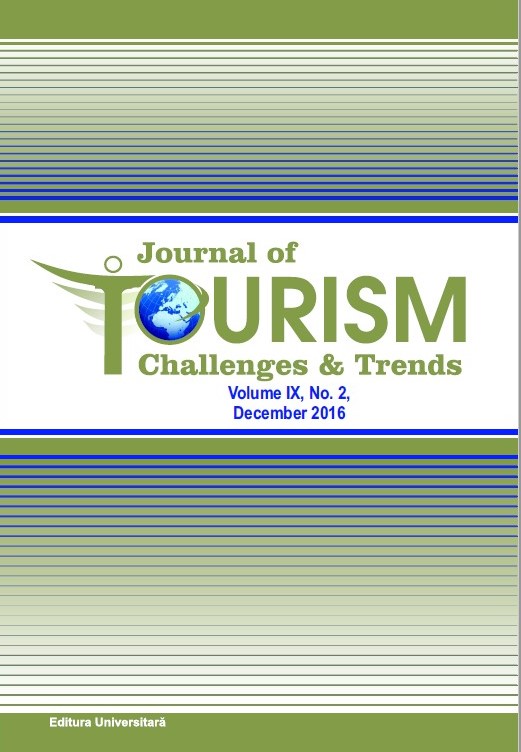“TOURISM” AND “COUNTRY” IN PLACE BRAND THEORY AND PRACTICE
“TOURISM” AND “COUNTRY” IN PLACE BRAND THEORY AND PRACTICE
Author(s): Gabriela Virginia POPESCUSubject(s): Tourism
Published by: Asociatia Romano-America a Managerilor de Proiect pentru Educatie si Cercetare
Keywords: place brand; Romania;Country brand;
Summary/Abstract: The first industry reaching its worldwide dimension is tourism: in 1998, the tourists' number amounted to 625 million and this number is estimated to reach up to 1.6 billion by 2020, as result of “the hedonistic dimension” of consumption in which the leisure time activities are more and more important. Tourism offers the direct contact, the inner personal experience of the individual with countries, cities, and regions, generally referred as “places”. On the other hand, due to the rush for competitivity, a new solution for business development has emerged – the relocation. Countries, cities, and region in search for investors any other kind of resources have determined the emergence of a new theory and practice – the place brand. There is no final definition of “place brand”, but it is unanimously accepted that place brand is the application of commercial brand strategy to places (countries, cities, and regions). These places and the tourism have in common certain elements (landscape, tradition, history, culture, people). Dealing with the same (apparently) values, tourism brand, and country brand are often confused, interchanged or synonyms. This paper aims at putting these two concepts side by side and draws the (very fine) line that separates them assigning, at the same time, their proper role in the new (and great) theory and practice of place brand. This paper is focused on two directions. The theoretical direction refers to the conceptual delimitation between tourism brand and country brand. The applicative section is focused on presenting the current status of tourism brand and country brand in Romania and the other CEE countries, as well as in presenting Romania’s position in relation to its competitors, respectively the other CEE countries from those two brands’ point of view. On the other hand, this paper could be considered relevant to the practitioners because it offers a start point for the further and proper practice of tourism and country branding. The research will benefit from the literature review in tourism and country branding, as well as, from secondary data analysis of reports, statistics and other publications on this topic. The conclusion of the paper is that tourism brand should be considered a component of a larger and more complex strategy – the country branding. Also, the paper insists on the fact that the tourism brand is the most accessible communication mean about a country; that is why it should refer to other aspects, too, not only to what traditionally and implicitly is included in this concept, but to have in view other values and attributes of the country that may (or even must) make the country more appealing to investors, residents or any other resources. The hospitality and rural environment, with the wild (untouched by human) landscape, are not enough for any of those two brands.
Journal: Journal of Tourism Challenges and Trends
- Issue Year: 9/2016
- Issue No: 2
- Page Range: 33-61
- Page Count: 29
- Language: English
- Content File-PDF

